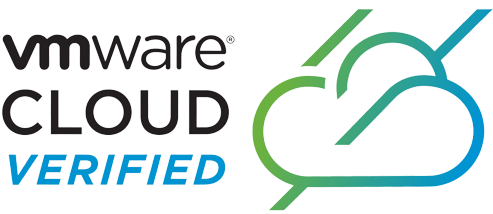With businesses moving an increasing amount of sensitive or mission critical data to the Cloud, robust Cloud security has never been more important than it is now. In fact, Cloud is one of the biggest targets for cyber-attack. So much so that more than a third of businesses globally experienced a data breach in their Cloud environments last year according to the 2023 Thales Cloud Security Study.
Moving closer to home, in our South African Cloud Survey, we discovered security around Cloud is one of the biggest concerns among organisations across the country, with 40% of respondents admitting they planned on increasing spend on Cloud security and resilience.
With that in mind, we’d like to unpack a few of our essentials when it comes to creating a resilient Cloud environment.
The Keys to Effective Data Protection & Disaster Recovery
Train and Educate Your Team
They’ll always be your first line of defence. An effective data protection and disaster recovery strategy requires a well-informed and trained team. Invest in comprehensive training programmes to educate employees about security best practices, incident response procedures, and data protection policies. Foster a culture of vigilance and ownership by regularly communicating the importance of data protection and conducting security awareness campaigns.
Understand Your Data Landscape
You can’t protect what you don’t know you have – especially if you don’t know where it’s stored. So, the first step involves conducting a thorough inventory of your data assets to identify sensitive data, critical applications, and dependencies. Once that’s done, you’ll need to categorise this data based on its importance, regulatory requirements, and recovery time objectives (RTOs) to establish appropriate protection and recovery strategies.
Implement a Multi-Layered Security Approach
From there, you’ll need a robust security framework. This means employing a multi-layered approach that encompasses network security, access controls, encryption, and regular security assessments. Implement strong authentication mechanisms, role-based access controls (RBAC), and data encryption at rest and in transit. Regularly monitor and analyse security logs, implement intrusion detection systems, and leverage threat intelligence to proactively identify and address vulnerabilities as and when they arise. Simply put, Cloud security needs to happen 24/7/365 on every level.
Embrace Data Encryption
This is a critical component of data protection, as it ensures that even if your data is compromised (because life happens), it remains unreadable without the encryption keys. You can leverage the encryption mechanisms provided by Cloud service providers or implement your own encryption strategies to protect sensitive data. Consider the use of encryption both at the application level and the database level, as well as encryption of your data backups and archives.
Regularly Back Up Your Data
Regular backups safeguard against data loss and corruption. Bringing it back to Point 1, you can determine the frequency and granularity of your backups based on the criticality of your data. Consider leveraging Cloud-native backup services or third-party backup solutions that offer automated backups, incremental backups, and point-in-time recovery capabilities. It’s also important to test your backup integrity and periodically perform data recovery drills to validate the effectiveness of your backup strategy.
Develop a Disaster Recovery Plan
This is crucial for mitigating the impact of unforeseen events. Time is money, and the longer you stay offline following an incident, the more money your business will lose. Identify potential threats, such as natural disasters, cyberattacks, or infrastructure failures, and develop recovery strategies to minimise downtime. Leverage the Cloud’s inherent capabilities, such as data replication across multiple regions or availability zones, to ensure high availability and resilience. Don’t forget to regularly test and update your disaster recovery plan to address evolving risks and technological advancements.
Leverage Cloud Service Provider Capabilities
Cloud service providers offer a wide range of tools and services to enhance data protection and disaster recovery. Take advantage of their native backup and disaster recovery services, as well as features like geo-redundancy, snapshots, and automated failover. Understand the shared responsibility model and ensure that you implement necessary security controls and configurations on your end too.
Data protection and disaster recovery in the Cloud demands a proactive and multi-faceted approach. By understanding your data landscape, implementing a multi-layered security framework, leveraging encryption, performing regular backups, developing a robust disaster recovery plan, and taking advantage of cloud service provider capabilities, organisations can safeguard their critical data and ensure business continuity. Combined with ongoing training and education, these practices empower businesses to navigate the evolving threat landscape and confidently embrace the benefits of Cloud computing – like embracing digital transformation – while maintaining data integrity and resilience.
Please click here to access the ‘South Africa Cloud Survey Report (May 2023)’ and find out more on current local Cloud migration trends. The survey was undertaken by Nymbis Cloud Solutions in partnership with Veeam and Africa Analysis.








